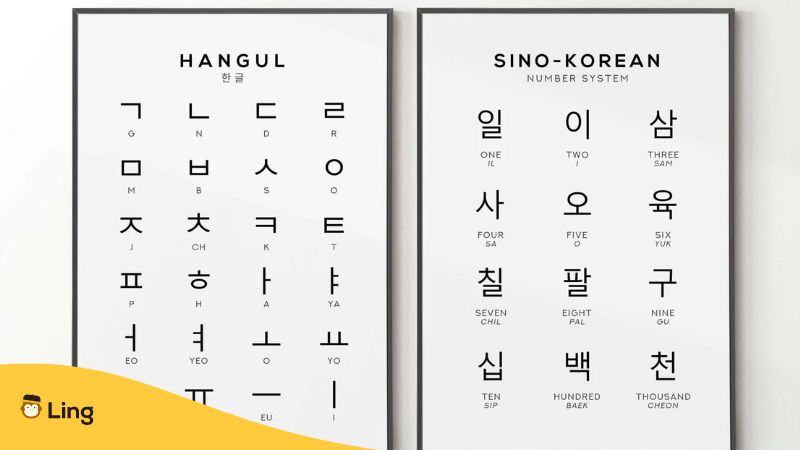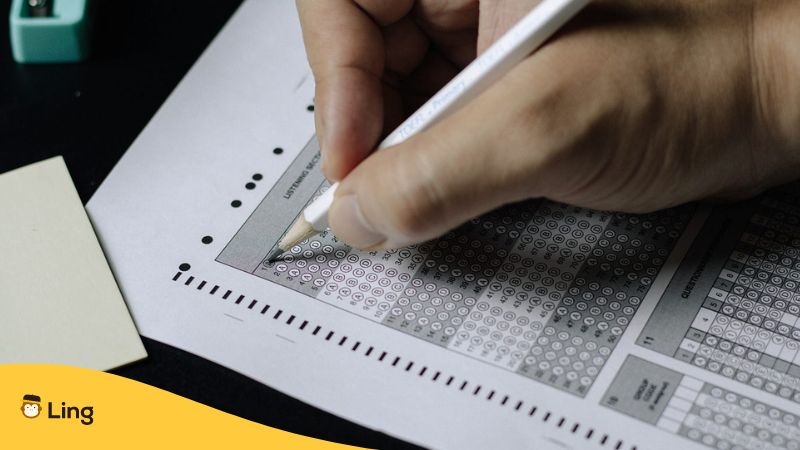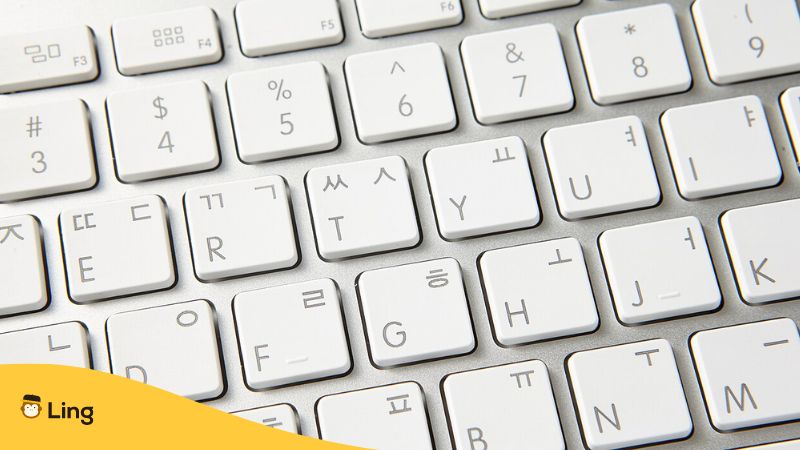Before I talk about how I learned Korean, let’s talk about how the language got so popular. It hasn’t been long since the Korean Wave, or Hallyu (한류). All of a sudden, South Korean TV dramas and albums were making their way to the screens and music store shelves of other Asian countries and later on internationally. This was something they hadn’t done before.
Before they knew it, the whole world fell in love with Korean pop culture, which is famous for Korean dramas, endearingly known as K-drama (한국 드라마), as well as Korean music, especially K-pop (케이팝). Its impact was so big that more people started to visit South Korea than ever before, giving the country’s tourism and economy a great boost.
At first, you’ll learn basic stuff like hello or 안녕하세요 (Annyeonghaseyo), thank you or 감사합니다 (Gamsahamnida), and, of course, the famous I love you or 사랑해요 (Saranghaeyo). But rather than just memorize, why not learn Korean properly, learn vocabulary, understand grammar rules, and know how to form sentences so that you can communicate?
Table of Contents
Tips On How I Learned Korean
Learning Korean With Language Apps And Online Resources
I started by learning the Korean alphabet, or Hangeul (한글). After all, the first step to learning a language is learning how to read it, especially if it doesn’t use the Latin script. Unlike languages like Spanish, French, and German, Korean has its own alphabet. So, if you’re looking to learn a new language with a completely new writing system, learning Korean is a great idea!

The Korean alphabet has 14 consonants and 10 vowels, for a total of 24 letters, less than the English alphabet’s 26 letters. Instead of looking at a static chart like the one above, I used language learning apps, including the Ling app, to learn.
Once I mastered the Korean alphabet, I went on to learn basic Korean greetings, words, grammar structures, numbers, honorifics, and, of course, how to put basic Korean sentences together. In addition to language learning apps, I also used numerous online resources to supplement my Korean language learning journey.
Learning Korean With Textbooks And Exercise Books
While I didn’t start with Korean textbooks and exercise books, I later switched to using them because I had signed up for the Test of Proficiency in Korean (TOPIK) and needed to become more familiar with the test format.
You can choose to take either TOPIK I (Levels 1 to 2) or TOPIK II (Levels 3 to 6), but both formats are the same. Both tests consist of a multiple-choice listening and reading section, an open-ended writing section, and, most recently, a speaking section.

I personally opted to take TOPIK II as I really wanted to challenge myself and see where my Korean level stood. It was a pretty intense test, I looked at so many Korean texts that day that I was honestly starting to see boxes in my vision right after!
Spoiler alert: I managed to score TOPIK II (Level 5), the second highest level. However, TOPIK certification only lasts two years, so my certification has sadly expired since then. I’m aiming for TOPIK (Level 6) in my next attempt, so I’m still learning Korean!
Even after taking the test, I continued to learn intermediate and advanced Korean vocabulary and grammar. Throughout, I kept an online word bank and added new Korean vocabulary to it. I categorized the Korean words according to whether they were nouns, verbs, adjectives, or more. I would also form a sentence with the word in it to make sure I knew how to use it.
Learning Korean With Korean Entertainment
Transcribing Korean Variety Shows Or Interviews
I decided to expand my Korean writing skills beyond a pen—can you guess what? If you’re thinking of a laptop, you’re absolutely right! I bought a Korean-language keyboard cover online and added the Korean-language keyboard to my settings.

I then picked Korean media I liked and started transcribing it. These include vlogs, variety shows, and YouTube pranks. I would give each speaker a representative emoji and look at the Korean subtitles to transcribe accordingly.
Once I got more confident, I started transcribing without even looking at the subtitles! This meant killing two birds with one stone by practicing my writing and listening at the same time. So, if you’re into watching Korean dramas, movies, TV shows, or YouTube channels, I strongly recommend this as a great way to practice not only your writing and reading skills but perhaps also your listening.
Writing And Breaking Down Korean Songs
As someone who already had K-pop music on repeat, I was more than happy to transcribe and break down the meaning of my favorite Korean songs. It got to the point where I could remember the lyrics by heart and knew what they meant even if I hadn’t listened to the songs in a while.
So you see, learning Korean vocabulary doesn’t stop at textbooks. You can learn new words and even observe Korean grammar in use through Korean music! It’s also a great step to connecting with your favorite singers or groups on a deeper level and understanding Korean culture better.
Maintaining My Korean Proficiency
Talking To Korean Friends And Fellow Korean Language Learners
Did you know that you don’t have to be in Korea to make Korean friends? This may sound surprising, but I made my Korean friends during a summer exchange in Sweden and even made one during a motorcycle course in Chiang Mai!
We engaged in everyday conversation in Korean and taught one another slang we wouldn’t learn or know otherwise in our respective native languages. It’s great to speak Korean with native speakers because they can correct you if you make a mistake!
And if you can’t find native speakers to practice with, don’t worry! You can meet native speakers online on language exchange platforms or even meet fellow Korean learners and practice speaking together.
Doing Advanced Korean Course Online
I’m currently doing an advanced Korean course offered by a renowned Korean university online. This allows me to continue honing my reading and writing skills, as well as improving my listening skills. The course also offers both Korean and English subtitles, though I prefer not to use the latter as I believe in target language immersion as much as possible.
The topics are advanced and differ each week. They include education, technology, culture, and more. So, if you’ve already been learning Korean for a while and are looking to take your studies to a much higher level, looking at advanced Korean courses online may be a good option for you.
Easy Korean Phrases About Learning Korean
Here are some phrases you can use when people ask you about how your Korean language learning progress is going!
| English Translation | Korean Script | Romanization |
|---|---|---|
| I am studying the Korean language. | 저는 한국어를 공부하고 있습니다. | Jeoneun hangugeoreul gongbuhago itseumnida. |
| I have been learning Korean for [duration]. | 저는 [duration] 동안 한국어를 배우고 있습니다. | Jeoneun [duration] dongan hangugeoreul baeugo itseumnida. |
| I am good at reading Korean. | 저는 한국어 읽기를 잘합니다. | Jeoneun hangugeo ikgireul jalhamnida. |
| I am not good at Korean listening. | 저는 한국어 듣기를 잘 못합니다. | Jeoneun hangugeo deutgireul jal motamnida. |
| I want to practice Korean writing. | 저는 한국어 쓰기를 연습하고 싶습니다. | Jeoneun hangugeo sseugireul yeonseupago sipseumnida. |
| Can you practice speaking Korean with me? | 저와 함께 한국어 말하기 연습을 할 수 있습니까? | Jeowa hamkke hangugeo malhagi yeonseubeul hal su itseumnikka? |
| Learning Korean is easy. | 한국어 배우기는 쉽습니다. | Hangugeo baeugineun swipseumnida. |
| Learning Korean is difficult. | 한국어를 배우기는 어렵습니다. | Hangugeoreul baeugineun eoryeopseumnida. |
| I will get better at Korean. | 저는 한국어를 더 잘 할 것입니다. | Jeoneun hangugeoreul deo jal hal geosimnida. |
| Let’s study Korean together. | 같이 한국어 공부합니다. | Gachi hangugeo gongbuhamnida. |
| All the best! | 화이팅! | Hwaiting! |
Ready To Learn Korean?
And that’s the story of how I learned Korean. Of course, there are definitely other ways to learn, such as hiring a native Korean speaker to be your Korean Teacher, using formal Korean textbooks, going for a summer or winter language exchange program in Korea, and so much more! How you want to define your language learning journey is completely up to you, so figure out what works best for you and practice consistently.
One of the best ways to get started with learning Korean would definitely be via the Ling app, especially if you’re someone who prefers to learn outside of the classroom. With its fun and bite-sized gamified Korean language lessons, it goes without saying that the Ling app’s Korean language course is like no other. So, if you’re ready to embark on your Korean language learning journey, download the app today! 화이팅 (Hwaiting)!




































































One Response
이것들은 모두 완벽해요 I really want to study Korean